Meet Quetzalcoatlus – World’s Largest Flying Animal Had A Wingspan Of Up To 52 Feet (15.9 m)
Eddie Gonzales Jr. - AncientPages.com - About 100 to 66 million years ago, during the Late Cretaceous, the climate was warmer than the present. Many new species appeared on all continents, including the giant Quetzalcoatlus that lived in North America.
The Quetzalcoatlus compared to a man, car, and pterodactyl. Source Pinterest
With a wingspan reaching as much as 15.9 m (52 ft), Quetzalcoatlus is one of the largest known flying animals ever. This giant animal was named after the Mesoamerican feathered serpent god, Quetzalcoatl, who was well-known under different names in the region.
The Aztecs called him Quetzalcoatl, and the ancient Maya called him Kukulkan.
The first Quetzalcoatlus fossils were discovered in Texas, the United States, from the Maastrichtian Javelina Formation at Big Bend National Park in 1971 by Douglas A. Lawson. Later, Lawson discovered a second site where he found fragmentary skeletons of much smaller individuals.
It was how we learned about this giant flying animal's existence.
Quetzalcoatlus lived among dinosaurs, but the animal was not a dinosaur. Quetzalcoatlus was the most famous member of the azhdarchids, a family of pterosaurs, a flying reptile.
"The pterosaurs and the dinosaurs appear to have evolved on divergent paths from earlier reptilian life forms. It also seems clear that the pterosaurs did not evolve into the birds.
In this regard, the anatomy is that of the wing. In a pterosaur, the fourth finger of each forelimb was considerably elongated. It supported the front edge of a membrane that stretched from the flank of the body to the farthest tip of the finger. The other fingers were short and reptilian., with a sharp claw at the end of each one.
In a bird, the second finger is the principal strut of the wing, and in the bird, much of the wing consists of course of feathers," Wann Langston explained.
The animal is often depicted with feathers, but researchers think Quetzalcoatlus was covered with pycnofibres, hair-like fibers that differ from animal hair. When Quetzalcoatlus stood on the ground, it was as tall as a giraffe, more than five meters tall (16.4 ft), and weighed 250 kilograms.
Quetzalcoatlus soared the skies, and the animal could see many giant animals walking on our planet. Then, everything ended because about 65 million years ago, about three-quarters of Earth's plant and animal species went extinct.
This event is known as the K-T mass extinction because it occurred at the boundary between the Cretaceous (K) and Tertiary (T) periods. The dinosaurs were the most famous animals to perish, and the Quetzalcoatlus did not survive either.
Updated on October 30, 2024
Written by Eddie Gonzales Jr. - AncientPages.com - MessageToEagle.com Staff Writer
More From Ancient Pages
-
 Human Ancestors Preferred Mosaic Landscapes And High Ecosystem Diversity – New Study
Evolution | May 13, 2023
Human Ancestors Preferred Mosaic Landscapes And High Ecosystem Diversity – New Study
Evolution | May 13, 2023 -
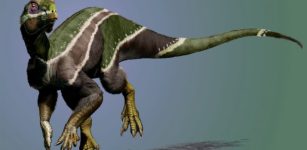 Newly Discovered Dinosaur, ‘Iani,’ Was Face Of a Changing Planet
Fossils | Jun 8, 2023
Newly Discovered Dinosaur, ‘Iani,’ Was Face Of a Changing Planet
Fossils | Jun 8, 2023 -
 World’s Oldest Fossilized Skin Discovered In Oklahoma – It’s Nearly 300 Million Years Old
Paleontology | Jan 15, 2024
World’s Oldest Fossilized Skin Discovered In Oklahoma – It’s Nearly 300 Million Years Old
Paleontology | Jan 15, 2024 -
 Frequent Fires Struck Antarctica During The Age Of Dinosaurs, 75 Million Years Ago – New Evidence
Paleontology | Apr 28, 2023
Frequent Fires Struck Antarctica During The Age Of Dinosaurs, 75 Million Years Ago – New Evidence
Paleontology | Apr 28, 2023 -
 A Mosasaur Wakayama – ‘Blue Dragon’ Terrorized Pacific Seas 72 Million Years Ago
Paleontology | Dec 18, 2023
A Mosasaur Wakayama – ‘Blue Dragon’ Terrorized Pacific Seas 72 Million Years Ago
Paleontology | Dec 18, 2023 -
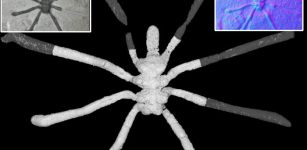 Extremely Rare Fossils Of 160-Million-Year-Old Sea Spider And Its Diversity By The Jurassic
Fossils | Aug 22, 2023
Extremely Rare Fossils Of 160-Million-Year-Old Sea Spider And Its Diversity By The Jurassic
Fossils | Aug 22, 2023 -
 170-Million-Year-Old Sea Monster Identified As The Oldest Mega-Predatory Pliosaur
Evolution | Oct 23, 2023
170-Million-Year-Old Sea Monster Identified As The Oldest Mega-Predatory Pliosaur
Evolution | Oct 23, 2023 -
 Fossilized Remains Of A Gigantic Jurassic Pterosaur Unearthed In Oxfordshire, UK
Fossils | Jun 5, 2024
Fossilized Remains Of A Gigantic Jurassic Pterosaur Unearthed In Oxfordshire, UK
Fossils | Jun 5, 2024 -
 Fossil Tells The ‘Tail’ Of An Ancient Beast
Paleontology | May 25, 2023
Fossil Tells The ‘Tail’ Of An Ancient Beast
Paleontology | May 25, 2023 -
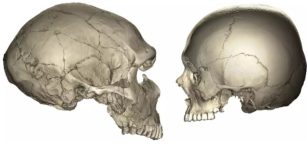 Why Humans Have Smaller Faces Compared To Neanderthals – Exploring Our Evolutionary History
Paleontology | Mar 28, 2025
Why Humans Have Smaller Faces Compared To Neanderthals – Exploring Our Evolutionary History
Paleontology | Mar 28, 2025 -
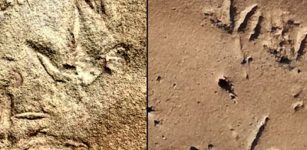 290-Million-Year-Old Bird-Like Footprints Left By Unknown Animals Found In Africa
Fossils | Nov 30, 2023
290-Million-Year-Old Bird-Like Footprints Left By Unknown Animals Found In Africa
Fossils | Nov 30, 2023 -
 Truth About ‘Welsh Dragons’ Finally Exposed By Scientists
Paleontology | Jun 5, 2024
Truth About ‘Welsh Dragons’ Finally Exposed By Scientists
Paleontology | Jun 5, 2024 -
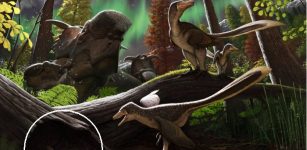 Fossil Of Tiny ‘Ice Mouse’ That Survived Arctic Cold In The Age Of Dinosaurs Discovered
Paleontology | Aug 21, 2023
Fossil Of Tiny ‘Ice Mouse’ That Survived Arctic Cold In The Age Of Dinosaurs Discovered
Paleontology | Aug 21, 2023 -
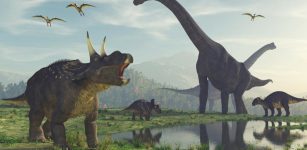 Evolution Of The Largest of The Large Dinosaurs
Evolution | May 9, 2023
Evolution Of The Largest of The Large Dinosaurs
Evolution | May 9, 2023 -
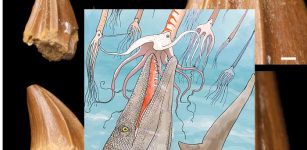 Fossil Of Mosasaur With Bizarre ‘Screwdriver Teeth’ Found In Morocco
Fossils | May 18, 2023
Fossil Of Mosasaur With Bizarre ‘Screwdriver Teeth’ Found In Morocco
Fossils | May 18, 2023 -
 Enigmatic Human Fossil Jawbone May Be Evidence Of An Early Homo Sapiens Presence In Europe
Evolution | May 2, 2023
Enigmatic Human Fossil Jawbone May Be Evidence Of An Early Homo Sapiens Presence In Europe
Evolution | May 2, 2023 -
 Megalodon Was No Cold-Blooded Killer – Tooth Minerals Reveal
Paleontology | Jun 27, 2023
Megalodon Was No Cold-Blooded Killer – Tooth Minerals Reveal
Paleontology | Jun 27, 2023 -
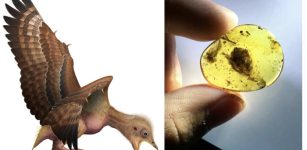 Why Ancestors Of Modern Birds Survived When All The Dinosaurs Died
Evolution | Jul 11, 2023
Why Ancestors Of Modern Birds Survived When All The Dinosaurs Died
Evolution | Jul 11, 2023 -
 Why Was The Late Ordovician Mass Extinction Event Odd?
Paleontology | May 19, 2023
Why Was The Late Ordovician Mass Extinction Event Odd?
Paleontology | May 19, 2023 -
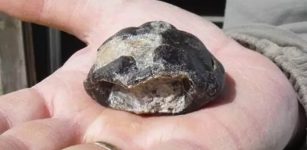 First Discovery Of A 127-Million-Year-Old Side-Necked Turtle Fossil In UK
Fossils | Jun 13, 2023
First Discovery Of A 127-Million-Year-Old Side-Necked Turtle Fossil In UK
Fossils | Jun 13, 2023

